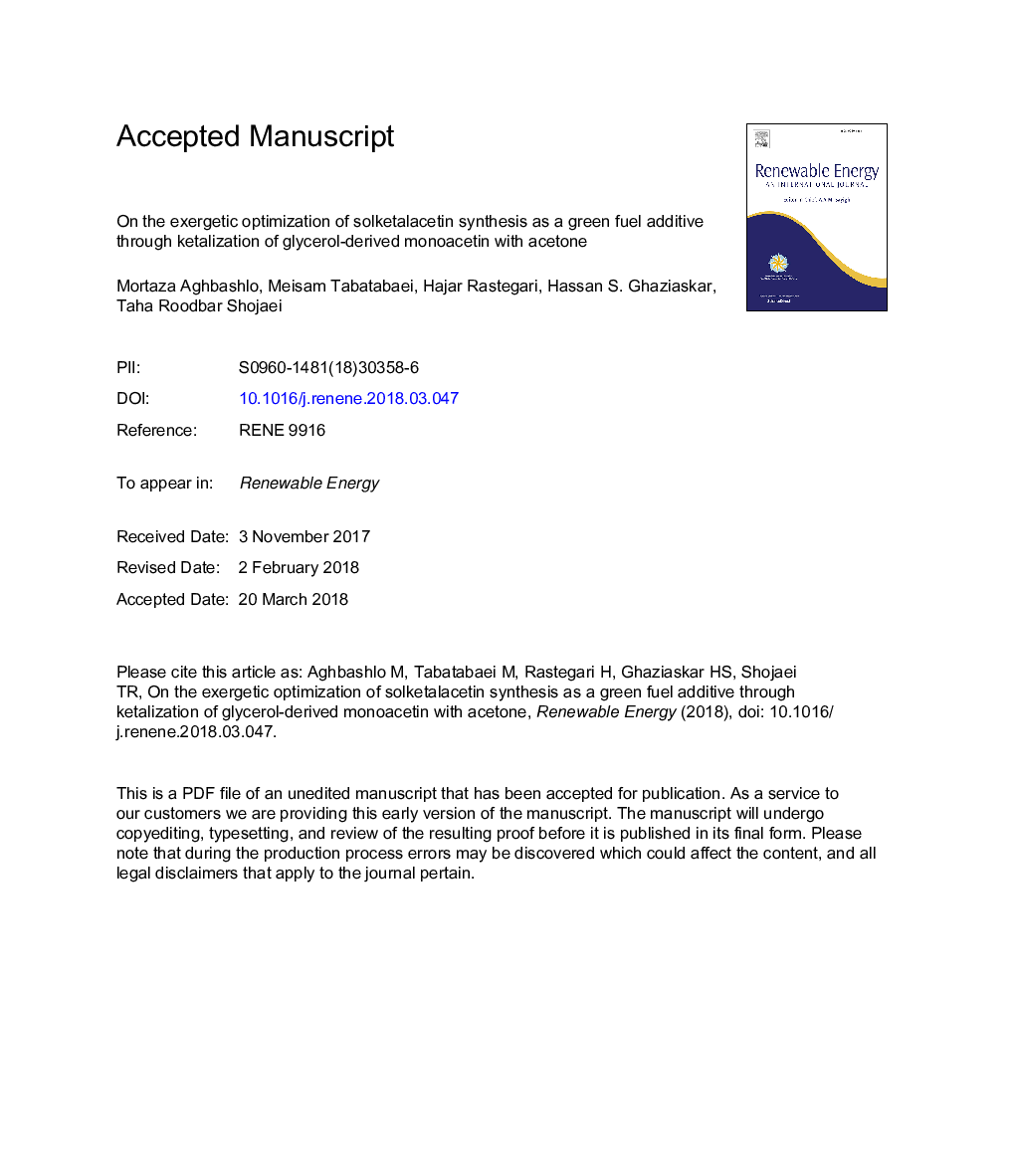| کد مقاله | کد نشریه | سال انتشار | مقاله انگلیسی | نسخه تمام متن |
|---|---|---|---|---|
| 6764239 | 1431578 | 2018 | 37 صفحه PDF | دانلود رایگان |
عنوان انگلیسی مقاله ISI
On the exergetic optimization of solketalacetin synthesis as a green fuel additive through ketalization of glycerol-derived monoacetin with acetone
ترجمه فارسی عنوان
در مورد بهینه سازی اکسپرسیونسیون سولتکلازتین به عنوان یک افزودنی سوخت سبز از طریق کتالیزاسیون مونوآستین مشتق گلیسرول با استون
دانلود مقاله + سفارش ترجمه
دانلود مقاله ISI انگلیسی
رایگان برای ایرانیان
کلمات کلیدی
تجزیه و تحلیل اگزرژی، افزودنی سوخت سبز، مونوآستین، سولتالاسستین سنتز می کند روش سطح پاسخ، غلظت گلیسرول،
موضوعات مرتبط
مهندسی و علوم پایه
مهندسی انرژی
انرژی های تجدید پذیر، توسعه پایدار و محیط زیست
چکیده انگلیسی
This study was devoted to an exergetically investigation and optimization of the operating conditions of an easy-to-scale-up continuous reactor applied for solketalacetin synthesis as a green fuel additive from glycerol-derived monoacetin in the presence of Purolite PD 206 catalyst. The process consisted of two steps, i.e., monoacetin synthesis by glycerol esterification with acetic acid followed by solketalacetin synthesis through reaction of the produced monoacetin with acetone. The main goal of this research was to assess the effects of reaction temperature (20-80â¯Â°C), acetone to monoacetin molar ratio (1-5), catalyst loading (0.5-2.5â¯g), feed flow rate (0.2-1â¯mL/min), and pressure (0-120â¯bar) on the exergetic performance parameters of the second stage of the process. Response surface methodology (RSM) was also used to optimize the operating conditions of the reactor by maximizing functional exergetic efficiency (FEE) and minimizing normalized exergy destruction (NED), simultaneously. Overall, feed flow rate had the highest impact on the exergetic performance parameters of the reactor while these indicators were not significantly influenced by pressure. RSM successfully modeled both exergetic parameters with an R2 higher than 0.99. Reaction temperature of 30.8â¯Â°C, acetone to monoacetin molar ratio of 2.7, catalyst loading of 1.6â¯g, feed flow rate of 1.0â¯mL/min, and pressure of 14.5â¯bar yielding FEE of 20.39% and NED of 0.90 were determined as the best operating conditions of the reactor. According to the results archived, process yield alone could not stand as the primary objective for making decisions on the optimal operating conditions of the chemical reactors, further highlighting the significance of taking energetic parameters into account in parallel.
ناشر
Database: Elsevier - ScienceDirect (ساینس دایرکت)
Journal: Renewable Energy - Volume 126, October 2018, Pages 242-253
Journal: Renewable Energy - Volume 126, October 2018, Pages 242-253
نویسندگان
Mortaza Aghbashlo, Meisam Tabatabaei, Hajar Rastegari, Hassan S. Ghaziaskar, Taha Roodbar Shojaei,
